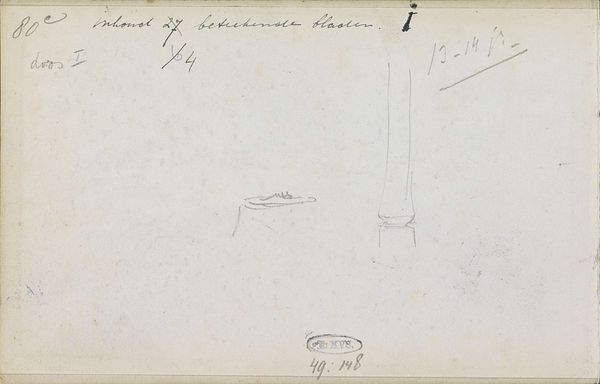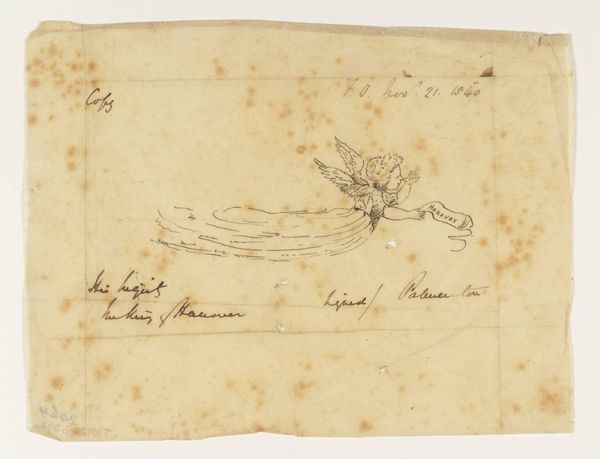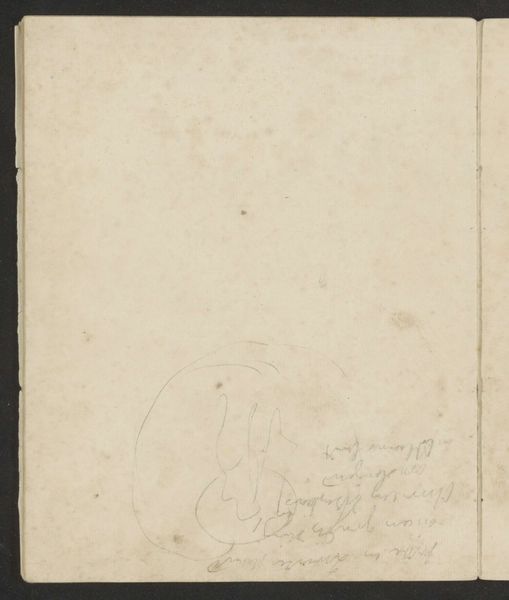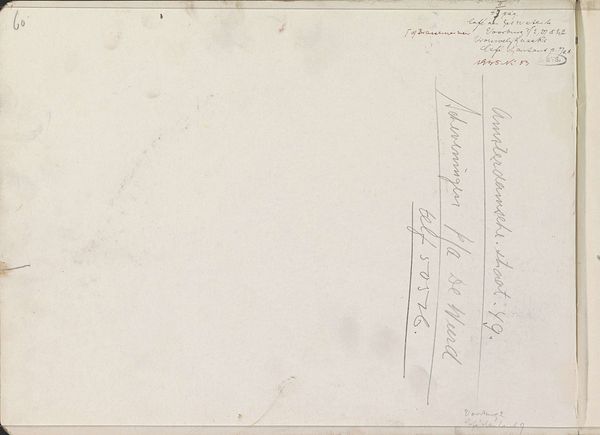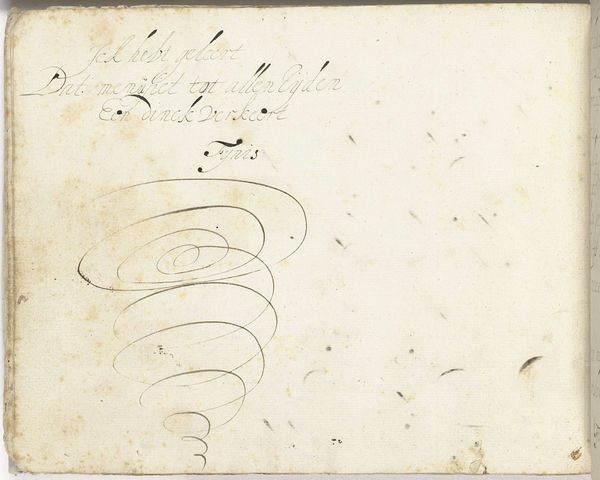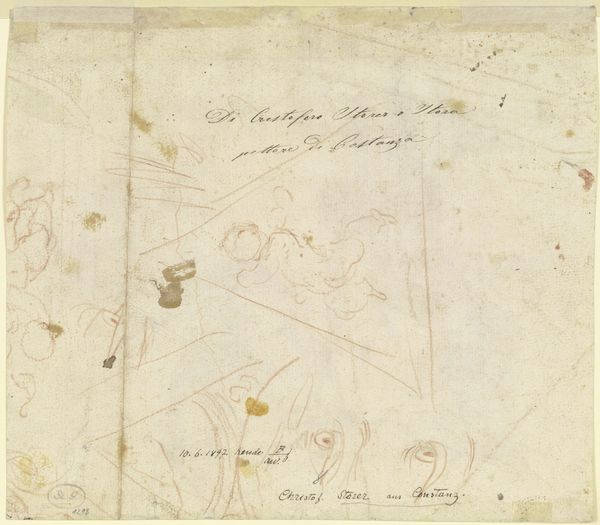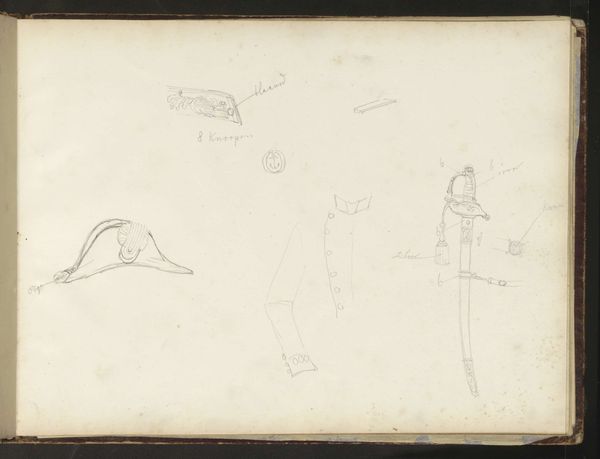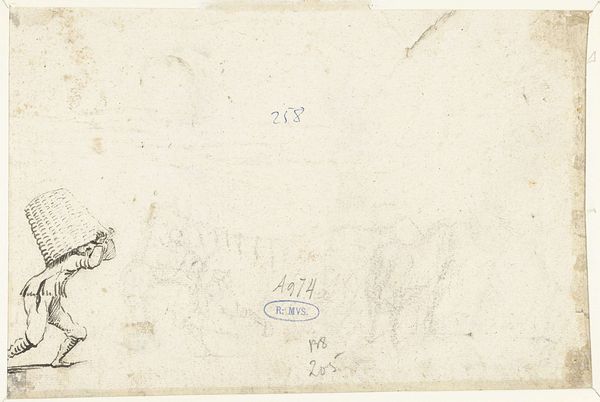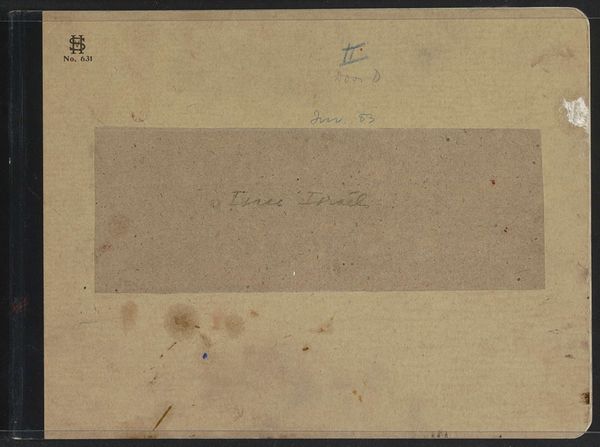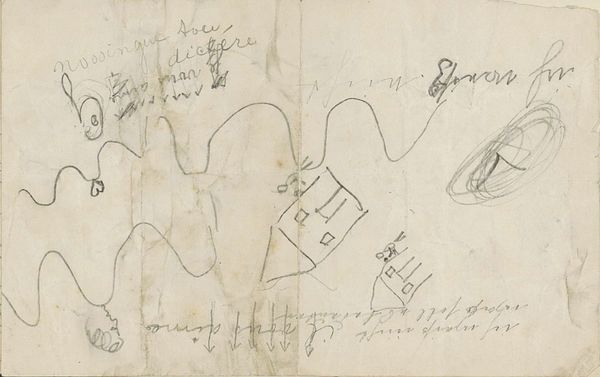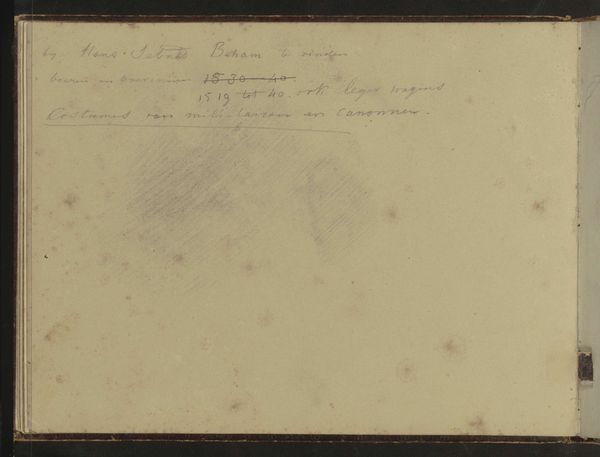
drawing, paper, ink, pencil
#
drawing
#
organic
#
landscape
#
paper
#
ink
#
pencil
#
realism
Copyright: Rijks Museum: Open Domain
Editor: Here we have "Insect," a pencil and ink drawing on paper by Adrianus Eversen, likely created sometime between 1828 and 1897. What strikes me first is the delicate quality of the lines. How do you read the formal elements in this piece? Curator: Certainly. The most immediate aspect is the treatment of line. Eversen employs very fine, almost hesitant, pencil lines to render the form of the insect. Consider the contrast between the implied volume of the body and the more definite, calligraphic treatment of the legs and antennae. The composition itself—the insect placed off-center within a large field of blank paper—creates a dynamic tension. What, for you, is the effect of this asymmetry? Editor: I find that it makes the insect seem very small and vulnerable, as if it’s adrift in a vast space. It also gives the drawing a very modern feel, even though it's quite old. What do you think the artist wanted to achieve with such stark simplicity? Curator: The negative space, far from being empty, serves to accentuate the precision and detail present in the insect’s form. Observe the variations in line weight; areas of shadow are suggested through denser concentrations of pencil strokes. One might argue this represents an almost scientific, detached observation. Does the piece remind you of botanical illustration in any way? Editor: Yes, actually, I see what you mean. It does feel a bit like a study or a scientific record, albeit a very elegant one. I hadn't focused as much on how that empty space actually contributes to the feel of the drawing. Curator: Exactly. And it is through those formal choices that the artist conveys meaning. Editor: Thanks, I now see this very simple drawing with fresh eyes!
Comments
No comments
Be the first to comment and join the conversation on the ultimate creative platform.
